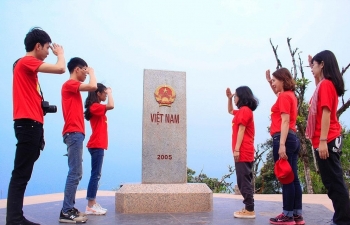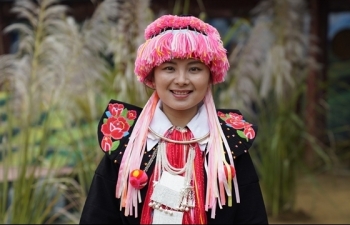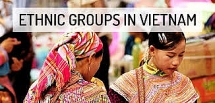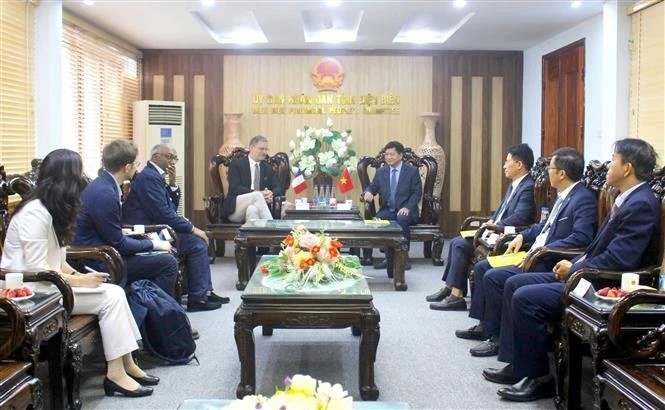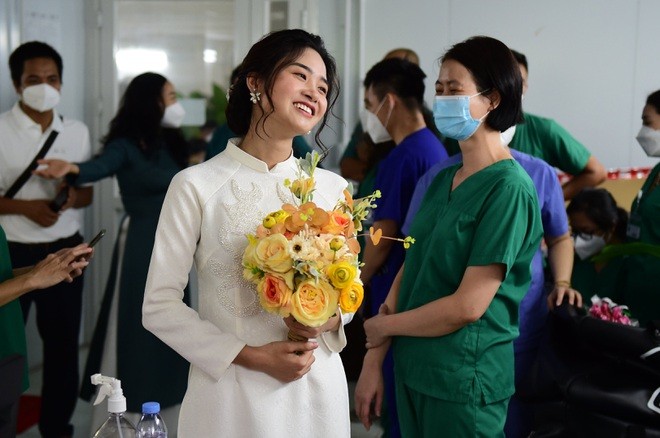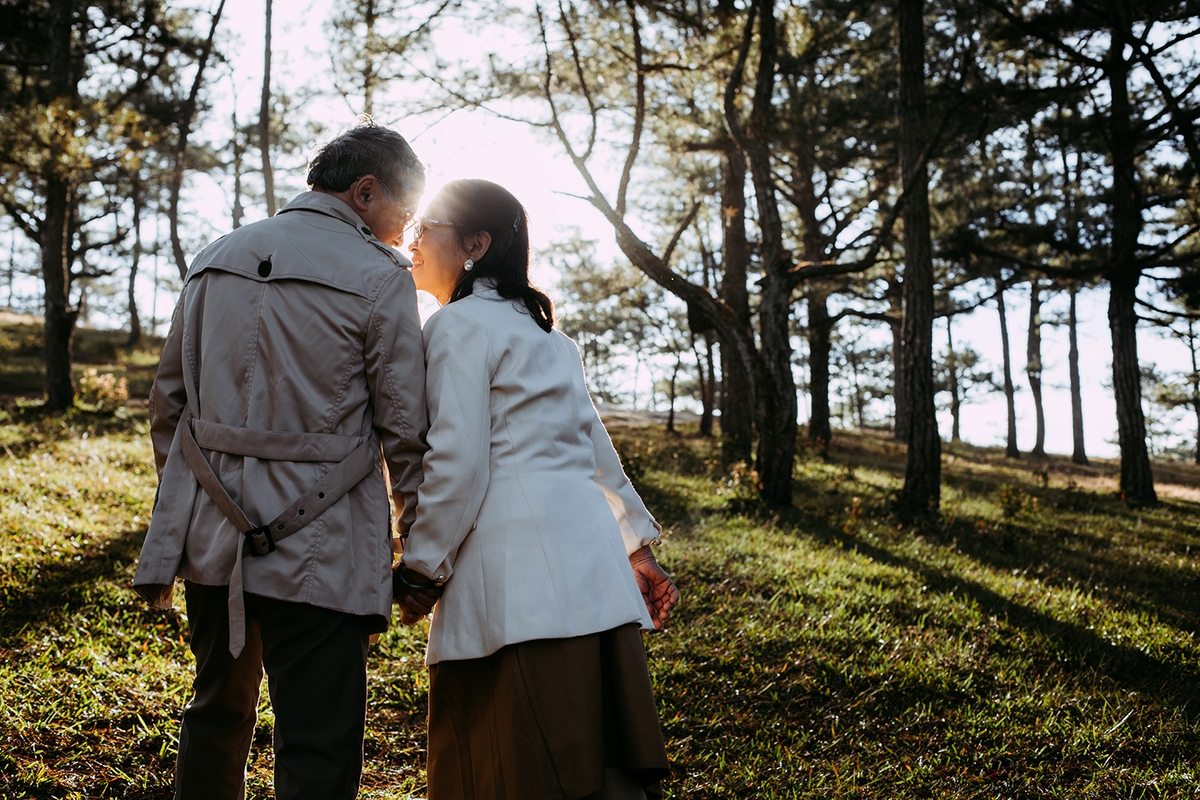Unique wedding ceremony of Kho Mu ethnic people
| A Pa Chai moutain, top venturesome travelers' worth conquering list | |
| First Dao Tuyen ethnic woman to earn master’s degree abroad against adversity | |
| Vietnamese ethnic minorities |
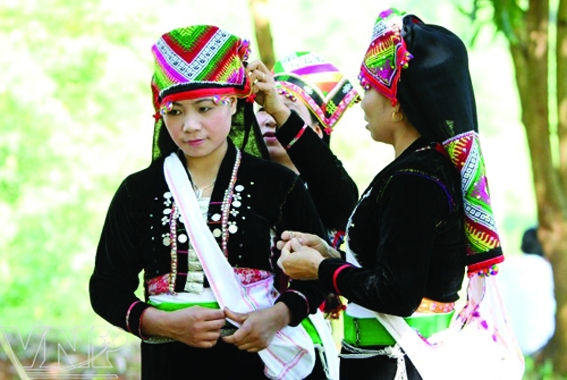 |
| A woman is doing make-up on the bride (L) (Photo: VOV4) |
Post-harvest time, which falls in September, or October of the lunar calendar, for Kho Mu people, is an opportunity to celebrate the new rice ceremony and start the wedding season, which will last until the next spring. They consider most families live an abundant life after harvesting time, plus the weather is comfortable, therefore, it’s the best time for couples to get married, CLB Tuong Duong reported.
A Kho Mu wedding goes through four rituals, namely engagement, wedding, matrilocal residence, and bridal escort.
At the age of 15, Kho Mu boys start dating their girlfriends. To flirt a girl, a Kho Mu boy will play dan nhi, a sort of vertical violin with two strings, a long handle, and a sound box played with a bow, under her stilt-house every evening. If he wins her heart, she will go outside and chat with him till the dead of night, according to Vietnam Law Magazine.
When his girlfriend agrees to marry him, the boy will ask his parents to visit her family to make a marriage proposal.
Months before the engagement ceremony, the boy’s family will go catch fish, hunt squirrels, butcher pigs to make proposal offerings for the girl’s family. The party of the boy’s family, including an uncle of the boy as the head, his parents and some cousins can also bring to the girl’s family betel and areca, four liters of wine, two kilos of rice and two chickens as the proposal offerings.
The boy’s family is warmly welcomed by the girl’s parents who will ask for their daughter’s opinion before accepting the proposal made by the boy’s uncle on behalf of his family.
The two families then have a meal together to mark their engagement. This meal is made by the girl’s family from all the proposal offerings. During the meal, the families discuss the wedding presents, according to Vietnam law magazine.
On the wedding day, the groom’s family gives wedding presents as exacted by the bride’s, which usually include a pig, four chickens, 30 kilos of rice, 60 liters of wine, two silver coins, two sets of cushions and quilts, a necklace, a pair of bracelets, a pair of earrings, a brooch, a pair of headdresses, a belt, a new dress and a new shirt. A representative of the bridal family receives the bridal presents in the presence of the village head as the witness of the two families’ engagement.
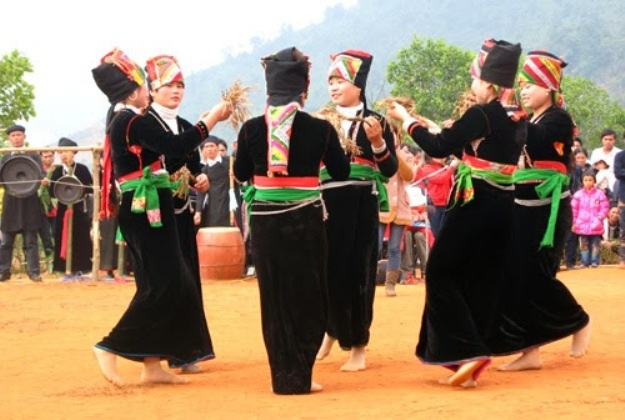 |
| Kho Mu women dancing to celebrate wedding day (Photo: Dan Tri) |
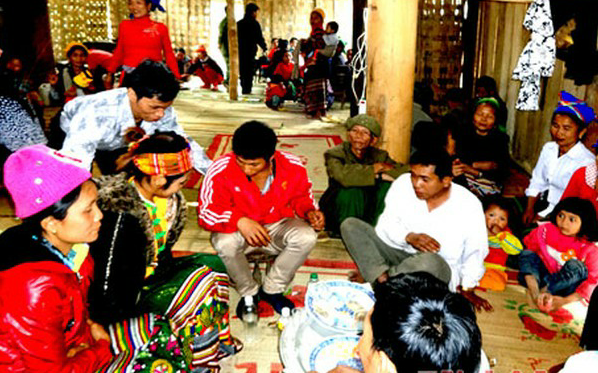 |
| People having a feast on wedding day (Photo: Bao Nghe An) |
A month after the proposal ceremony, the boy’s family chooses a good date for the wedding.
With the pig and chickens offered to the bride’s family, the groom’s makes a meal for offering to the bride’s ancestors. The offering ritual is conducted at the altar of the girl’s family, which is a square bamboo wattle placed in the middle of the worship section - the first part of the house next to the stairway reserved for guests. The offerings are put on the wattle with members of the bridal family and the groom sitting around. The bride’s father as ritual conductor informs the family’s ancestors of the groom as a new family member, inviting them to the wedding and praying for their support for the new couple’s happiness. After praying, he pastes sticky rice onto the hair of the groom and other family members and applies chicken blood to their knees. Closing the ritual, everyone sitting around the altar eats some food from the offering tray before joining their relatives and villagers in a wedding feast which lasts all day long.
“The Kho Mu wedding lasts 3 days. It takes place with the bride’s house on the first day. On the second day, the bride is brought to the groom’s house. On the third day, the bride and the groom are educated about how to behave in the two families and given wishes of a happy and prosperous life”, Mr. Luong Kim Sinh of Que Phong district, Nghe An province, was quoted by VOV world as saying.
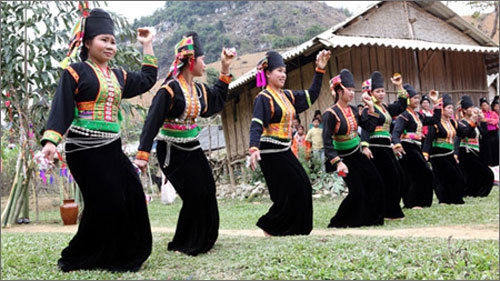 |
| A group of woman dancing to the "Tơm" song - the traditional wedding song of Kho Mu people (Photo: KHXHVNV Nghe An) |
One month after the wedding, the bride’s family gives each member of the groom’s family a present which is a pieu scarf, an embroidered brocade headdress. They also present the groom’s father a set of indigo clothes.
The man starts the matrilocal residence, staying with the girl’s family for a period of time. During this time, the man considers himself a member of the girl’s family and gets accustomed to their family life. Mr. Cut Van Thu from Tri Le commune, Que Phong district, Nghe An province, told VOV world: “I lived with my wife’s family 2 years before the wedding. It was compulsory”.
Usually, the period of matrilocal residence is from 3 months to one year, then comes the wedding. According to the Kho Mu in Nghe An province, this depends on the bride’s family as well as the groom’s financial status. Mr. Thu said: “Previously the matrilocal residence time was longer, regardless of the groom’s family’s wishes. If the bride’s family had no son, they wanted to have the groom stay in their family for a longer time”.
While living with the bride’s family, the man changes his surname to his wife’s. If they have a baby, the child will bear his or her mother’s name. But if they ever start living with the man’s family, the wife and children will have to use the man’s surname. During the time of matrilocal residence, the couple may have a baby, even though the wedding has not taken place.
If the groom’s family is poor, he may stay with his wife’s family forever. During the matrilocal residence time, the groom’s family will choose a good day to organize the wedding, VOV world reported.
Nowadays, a groom does not have to change his family name and can give money and food to his parents-in-law to shorten his matrilocal stay.
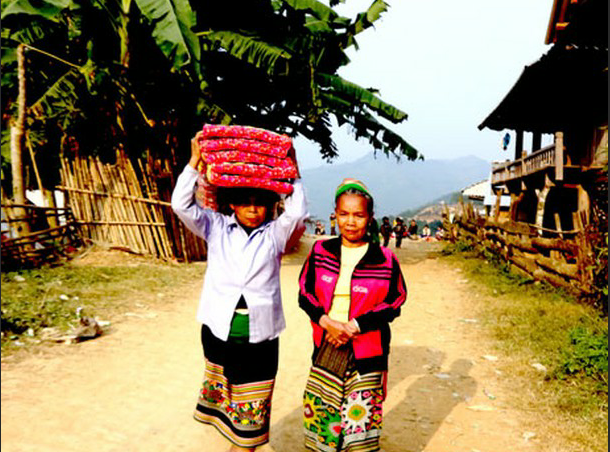 |
| Bringing blankets for the bride to the groom's house (Photo: Bao Nghe An) |
When the matrilocal period ends, the parents-in-law must give their son-in-law all the things needed for a new family, including cushions, quilts, rice seeds, breeder pigs, farming tools, and even buffalos and cows if the bride’s family is well-off.
To take their bride home, the groom’s parents must bring gifts to her family again, which comprise a pig, ten chickens, 100 liters of wine, 50 kilos of rice and 1 kilo of salt. The bride’s family will weigh these offerings to see if they are sufficient, Vietnam Law magazine reported.
The party taking the bride to her husband’s includes the groom’s parents, uncles, aunts and brothers. With the offerings, the groom’s family again prepares a meal for offering to the bride’s ancestors, asking for their permission for the couple to leave the bride’s home. After the offering ritual, the two families and villagers of the bride have a farewell party.
The bridal family’s party escorting the bride home, which includes the bride’s uncles, aunts and cousins, attends an offering ritual at the groom’s home similar to that conducted at the bride’s on the wedding day. The groom’s family members together with the bridal party sit around the offering tray. The host of the groom’s family mixes chicken eggs with sticky rice, pastes them onto the hair of the bride and other family members and applies chicken blood to their knees. This ritual aims to ask the groom’s ancestors to accept their new daughter-in-law and pray for their support for good health, happiness and prosperity for the new couple. After the offering ritual, the two families and villagers have a feast which costs the groom’s family a pig, six chickens, 30 kilos of rice and 60 liters of wine.
The daughter-in-law takes charge of the housework, including cooking, taking care of animals and preparing beds for family members. She is not supposed to have meals together with her father-in-law or to enter the room of her parents-in-law.
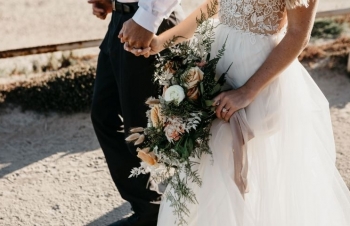 | New York allows couples getting married via Zoom amid COVID-19 “There is now no excuse when the question comes up for marriage,” New York’s Governor said Saturday during his daily virus briefing. “You can do ... |
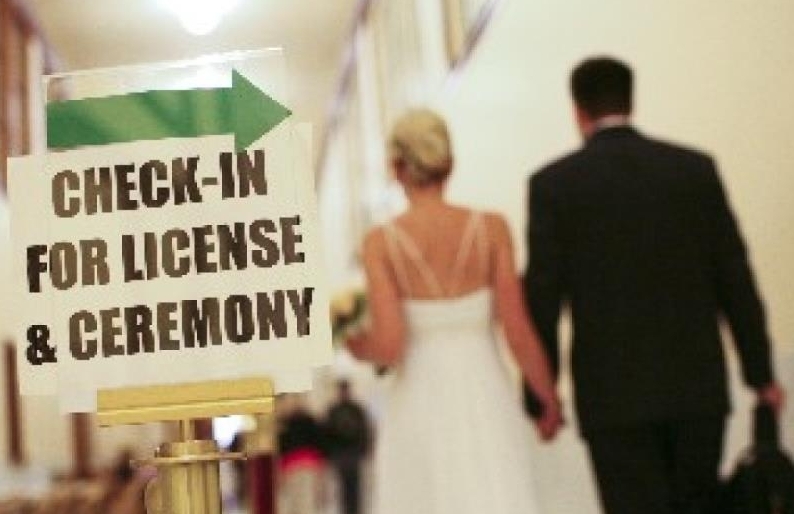 | Vietnamese couples encouraged to put off wedding over COVID-19 concerns Vietnam Ministry of Culture, Sports and Tourism sent a document proposing its municipal and provincal departments to convince families and couples to wreck marriage plans, ... |
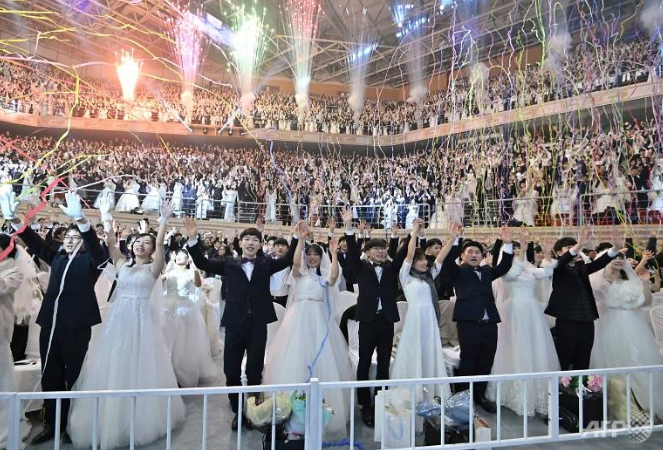 | Mass wedding held in South Korea amid coronavirus fears Thousands of couples tied the knot in a mass Unification Church wedding Friday (Feb 7), despite concerns over the spread of the coronavirus outbreak in ... |
Recommended
 Handbook
Handbook
Vietnam Moves Up 8 Places In World Happiness Index
 Handbook
Handbook
Travelling Vietnam Through French Artist's Children Book
 Multimedia
Multimedia
Vietnamese Turmeric Fish among Best Asian Dishes: TasteAtlas
 Handbook
Handbook
From Lost to Found: German Tourist Thanks Vietnamese Police for Returning His Bag
Popular article
 Handbook
Handbook
Prediction and Resolution for the Disasters of Humanity
 Handbook
Handbook
16 French Films To Be Shown For Free During Tet Holiday In Vietnam
 Handbook
Handbook
Unique Cultural and Religious Activities to Welcome Year of the Snake
 Handbook
Handbook

